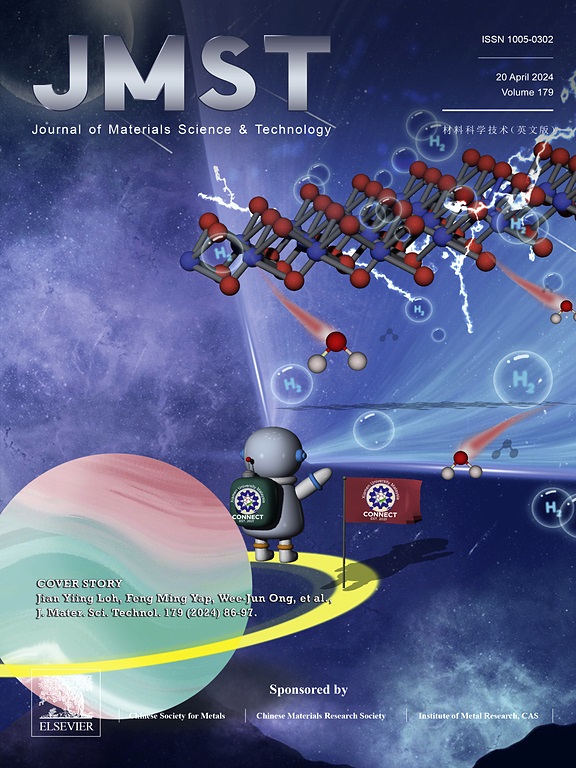Multifunctional and anisotropic Cf/ZrB2 based composites prepared via a combined injection and vacuum impregnation approach
IF 11.2
1区 材料科学
Q1 MATERIALS SCIENCE, MULTIDISCIPLINARY
引用次数: 0
Abstract
Multifunctional carbon fibers (Cf)/ZrB2 based composites were synthesized through a series of processes termed as IVI including sequential slurry injection, vacuum impregnation, pyrolysis and reimpregnation cycles, which facilitated the effective incorporation of ZrB2 powder into the carbon fiber preform. A single IVI cycle reduced the porosity of the preform from ∼77% to ∼40%. Microstructural analysis revealed a preferential distribution of ZrB2 powders within random layers and pyrolytic carbon effectively bridging the ceramic particles and fibers. Due to the hierarchical 0°/90° carbon fiber architecture, as fabricated Cf/ZrB2 composites exhibited anisotropy in mechanical and physical properties. Vertically oriented composites demonstrated higher compressive strain and low thermal conductivity (1.00–2.59 W m−1 K−1 from 298 to 1173 K). In contrast, horizontally oriented specimens exhibited higher compressive strength (60.77±20.30 MPa) and thermal conductivity (1.6–4.5 W m−1 K−1 from 298 to 1173 K). Furthermore, the continuous Cf endowed the composites with a positive temperature-dependent electrical conductivity characteristic, not only contributed to their higher electrical conductivity values, but also was helpful for maintaining the excellent EMI shielding effectiveness (19.80–22.51 dB) of Cf/ZrB2 up to 800°C without obvious degradation. Considering the low-density characteristics of as-prepared composites, their specific performance metrics demonstrate good competitiveness compared to those fabricated via alternative processes.

求助全文
约1分钟内获得全文
求助全文
来源期刊

Journal of Materials Science & Technology
工程技术-材料科学:综合
CiteScore
20.00
自引率
11.00%
发文量
995
审稿时长
13 days
期刊介绍:
Journal of Materials Science & Technology strives to promote global collaboration in the field of materials science and technology. It primarily publishes original research papers, invited review articles, letters, research notes, and summaries of scientific achievements. The journal covers a wide range of materials science and technology topics, including metallic materials, inorganic nonmetallic materials, and composite materials.
 求助内容:
求助内容: 应助结果提醒方式:
应助结果提醒方式:


